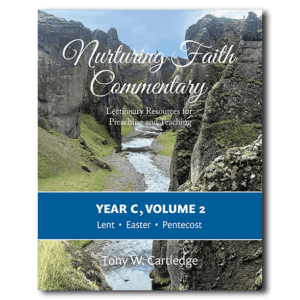
I grew up in a Southern Baptist pastor’s home within a denomination that has a long and tragic history of racism.
The convention was founded primarily over the issue of slavery. Not only did white Baptists in the South support slavery, but they have a profound legacy of failure within the civil rights movement.
This heritage can be seen in their failure to stand up against the brutality and lynching perpetrated upon African Americans, their refusal to support desegregation and their vocal opposition to civil rights.
Even today, there remains a vestige of systemic racism within Baptist life and much of evangelical Christianity in the U.S.
Like most white Americans, I grew up with little real understanding of what we have come to know as “America’s original sin.”
My history classes never really confronted me with the realities of the genocide committed against Native Americans over hundreds of years as millions of Indigenous people were literally exterminated.
My white heritage provided no real opportunity for me to learn about or understand that much of America’s wealth was literally built upon the backs of African slaves.
Even today, there is an almost unbelievable opposition to telling the truth about the history of our nation, incredibly even among many within the church. We are never going to overcome the deep-seated racism in our nation until we are willing to tell the truth.
I was incredibly fortunate that my denominational heritage was overshadowed by the influence of parents and grandparents who early in the civil rights movement confronted their own racial biases and began to work for justice for all people.
Over the past 25 years, I have been privileged to serve with organizations like Missouri Christians Against Racism and Poverty, and Missouri Faith Voices, as I joined with other Christians and people of faith as we sought to work for justice.
In 2007, I was one of about 400 Baptists who attended the annual Baptist World Alliance gathering in Ghana. During the gathering, the group traveled to the Cape Coast Castle, one of approximately 40 slave castles on the coast of West Africa.
As we toured the castle that day, I began for the first time to sense the horror of the transatlantic slave trade.

(Credit: Good Faith Media)
We saw dungeons worse than anything I had ever seen, which offered practically no light, ventilation or sanitation.
Before the slave trade was abolished, these cells had been packed so full of kidnapped Africans that they could not lie down. Enslaved Africans were imprisoned for weeks before being led through the door-of-no-return and chained in the hole of a ship for transport to the Americas.
Many died or were killed even before they could be transported. Many others died during the journey.
Every few weeks, a new ship would arrive, and another load of kidnapped Africans would be sent from the castle to America — what the traffickers called “Black gold.” And this was just one of 40 slave castles.

(Credit: Good Faith Media)
It was difficult to grasp the magnitude of the heartbreak. For over 400 years, more than 15 million men, women and children were the victims of the transatlantic slave trade — week after week, month after month, and year after year. It truly is one of the greatest tragedies of human history.
That day, we gathered as descendants of former slave owners and descendants of former slaves to hold a service of repentance and reconciliation. We prayed for forgiveness, we made commitments to work for justice and we pledged to fight racism.
It was one of the most moving experiences of my entire life, and I will never forget that day.
Incredibly, during the tour, we visited a “chapel” on the upper level of castle, only a short distance from the dungeons, where the slave traders would worship and seek God’s blessing for their journeys. We all wanted to ask, “How could this be? How could there be such a profound disconnect?”
Why do we need to observe the International Day of Remembrance of the Victims of Slavery and the Trans-Atlantic Slave Trade?
Because every human life is precious. Because Black Lives Matter. Because we need to understand the horror and the terror. Because if we do not remember, then our human depravity may do it again. Because the human traffickers are still at work.
The United Nations defines “human trafficking” as “the recruitment, transportation, transfer, harboring or receipt of people through force, fraud or deception, with the aim of exploiting them for profit.”
Men, women and children of all ages, and from all backgrounds, continue to be victims of this horrendous crime, and it is happening today in every part of the world including the United States.
The United Nations has estimated that internationally there are between 20 million and 40 million people in modern slavery today. It is hard to know the actual number because so many of the most vulnerable go undetected.
May God give us the grace and the courage to work for justice for all God’s children.
Editor’s note: This article is part of a series calling attention to the United Nations International Day of Remembrance of the Victims of Slavery and the Transatlantic Slave Trade (March 25). The previous articles in the series are:
The Debt America Refuses to Pay: Part 2 | Wendell Griffen
The Debt America Refuses to Pay: Part 1 | Wendell Griffen




